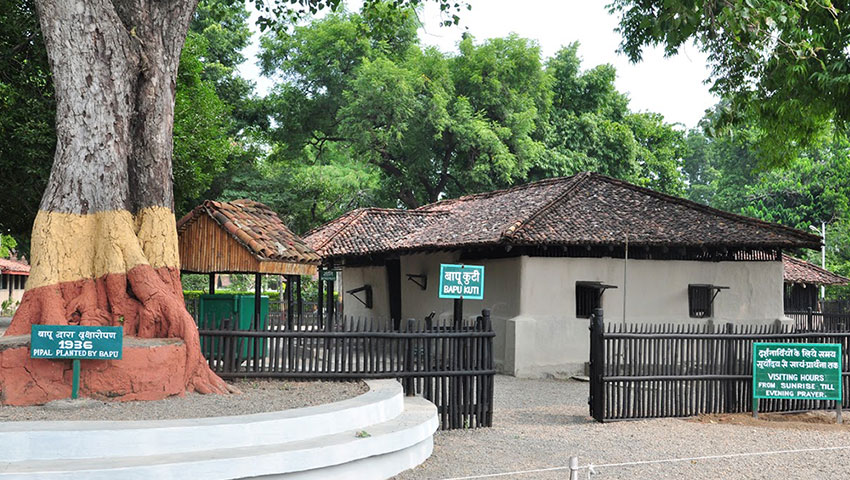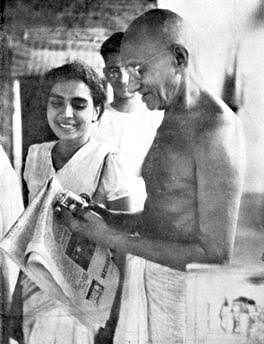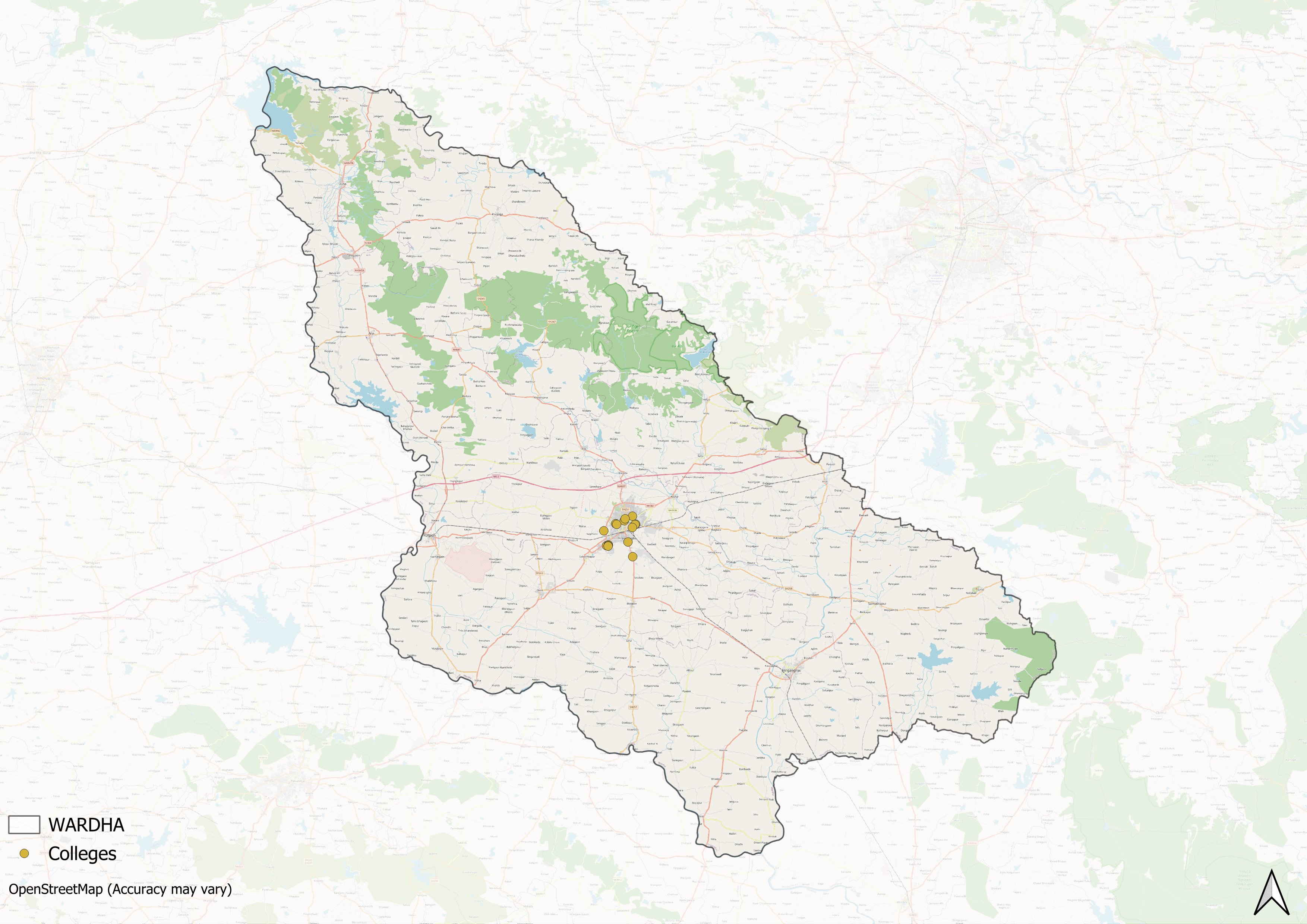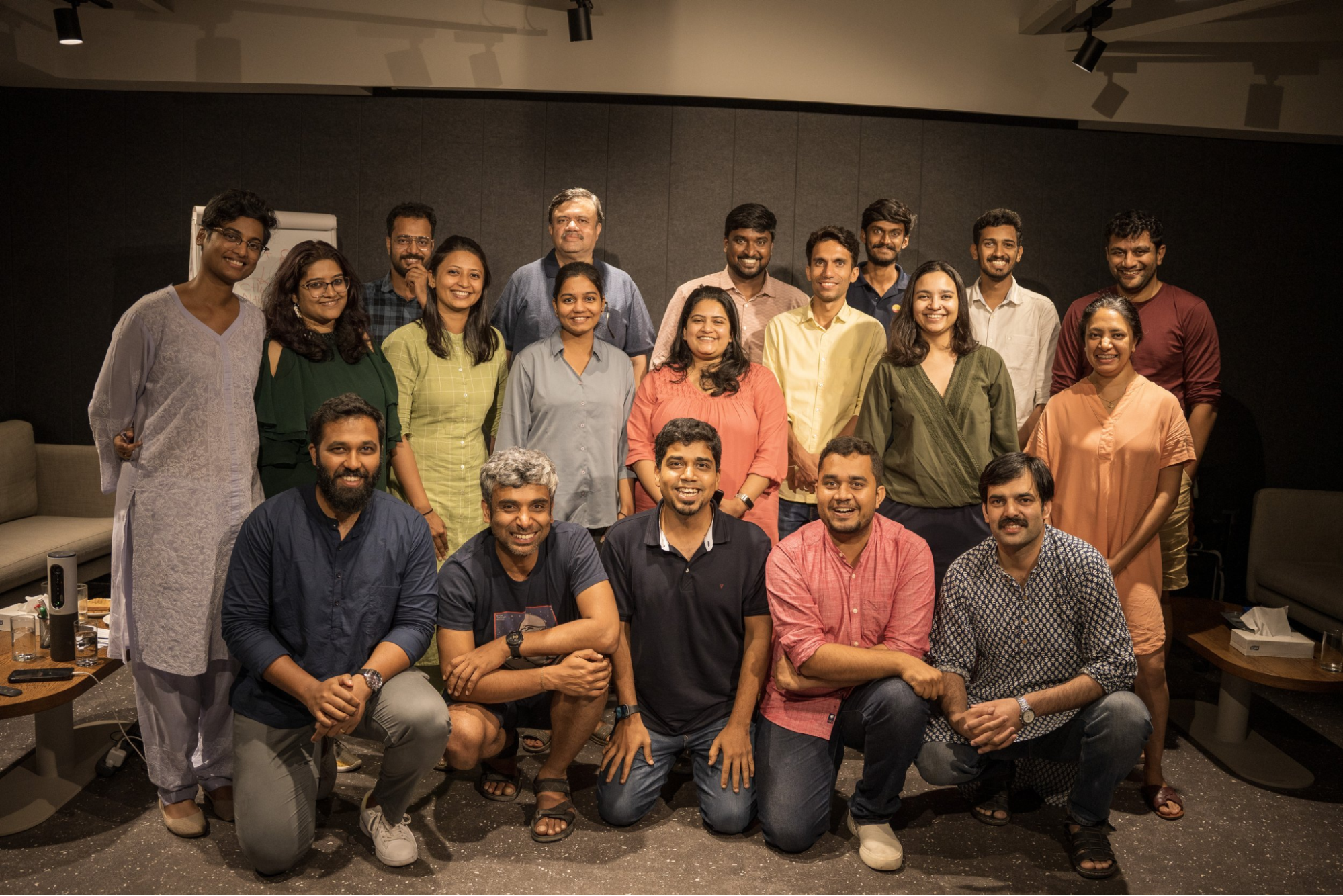Contents
- Early History
- Colonial History
- Prominent Figures & Organizations
- Paramdham Ashram and Brahma Vidya Mandir
- Sevagram Ashram & the Wardha Scheme of Education
- Post-Independence Era and Contemporary Educational Infrastructure
- Primary & Secondary Education
- Institutions of Higher Learning
- Mahatma Gandhi Institute of Medical Sciences
- Mahatma Gandhi Antarrashtriya Hindi Vishwavidyalaya (MGAHV)
- Prominent Figures & Organizations
- Yashwantrao Shikshan Sanstha
- NGOs and Community-Based Education Efforts
- Avanti Fellows
- Graphs
- Enrollment and Dropout Rate
- A. Student Enrollment Numbers
- B. Student Enrollment (Class-Wise)
- C. Student Enrollment (Gender-Wise)
- D. Student Enrollment (By School Management Type)
- E. Drop Out Rate (By Schooling Level)
- F. Drop Out Rate (By Gender)
- Schools
- A. No. of Schools
- B. No. of Schools (Filtered by Gender Mix)
- C. No. of Schools (By School Management Type)
- Teachers
- A. No. of Teachers
- B. No. of Teachers (By School Management Type)
- C. No. of Teachers (Male vs Female)
- D. Education Level of Teachers
- Sources
WARDHA
Education
Last updated on 28 July 2025. Help us improve the information on this page by clicking on suggest edits or writing to us.
The educational framework of Wardha aligns with the broader structure of the Indian education system, encompassing pre-primary, primary, secondary, and higher education. By the 19th century, the introduction of the Western education framework in the district changed its educational landscape. British administrators and missionaries became actively involved in shaping education in the region.
Still, even as colonial influences grew, the early 20th century saw a wave of local initiatives; its existence indicated an increasing public awareness regarding the importance of education. Local communities took charge of education, a movement that carried into the post-independence era, shaping the district’s educational landscape in lasting ways.
Notably, in 1937, a small town in Wardha became the gathering place for the All India Educational Conference, drawing participants from across the country. This pivotal event forever changed India’s educational landscape, establishing Wardha as one of the key centers for educational reform and innovation.
Early History
Little is known about the early educational history of Wardha. It is likely that the region followed broader patterns seen across pre-colonial India, where education was closely tied to religious institutions. Traditional village schools, known as vidya mandirs, are believed to have existed in many areas, providing basic education rooted in local culture and values. Interestingly, in the 1930s, Mahatma Gandhi sought to revive this indigenous system through educational reforms, and Wardha emerged as a significant centre for this revival.
Colonial History
Following the establishment of British control, Wardha became part of the Central Provinces and developed as one of the more planned urban centres under colonial administration. According to the district Gazetteer (1974), by 1905, Wardha had two high schools, one in Wardha town and the other in Hinganghat, both of which had evolved from English middle schools.
Prominent Figures & Organizations
While entities from the West played a significant role in shaping the educational landscape of Wardha, local figures and organizations also emerged as key contributors. Many of them established institutions that continue to shape education in the district today, alongside community-led organizations that have played a lasting role in its development.
Paramdham Ashram and Brahma Vidya Mandir
Paramdham Ashram was established in 1934 by Acharya Vinoba Bhave at Paunar, a village on the banks of the Dham River. It was intended as a place for spiritual study and community life. In 1959, the Brahma Vidya Mandir was founded within the ashram as a women’s residential community focused on self-sufficiency, shared work, and spiritual learning.
The ashram also became the base for Bhave’s Bhoodan Movement, which promoted voluntary land donations to the landless. While not a formal educational institution in the conventional sense, both the ashram and its affiliated initiatives formed part of a broader educational experiment (initiated by Bhave and Gandhi) that combined spiritual inquiry with social transformation.
Sevagram Ashram & the Wardha Scheme of Education
In 1936, Mahatma Gandhi relocated to a village near Wardha, which would later be named Sevagram. The settlement became an important site for educational experimentation. The following year, in 1937, the Wardha Scheme of Basic Education was introduced under Gandhi’s guidance. This scheme proposed free and compulsory education for children between the ages of 6 and 14, with a strong emphasis on incorporating productive manual work into the school curriculum.

The approach aimed to make education more accessible and locally relevant. Instruction was to be given in the mother tongue, and practical skills—such as spinning, weaving, or carpentry—were integrated with academic learning. The broader objective was to develop self-reliance among students and reduce dependence on imported models of education.
Though the scheme faced criticism and limitations in implementation, it played a foundational role in shaping debates around national education policy in pre- and post-independence India. Its principles later influenced Article 45 of the Indian Constitution, which mandated free and compulsory education for children.
Post-Independence Era and Contemporary Educational Infrastructure
Following India's independence, the education system in the district underwent major transformations, driven by both state policies and local leadership. The introduction of structured education levels—pre-primary, primary, secondary, and higher education—along with the implementation of National Education Policies, heavily shaped Wardha’s educational landscape. Over the years, the sector expanded with contributions from both government-funded institutions and private organizations. Additionally, the introduction of various educational boards, each offering distinct curricula and standards, provided students with more choices and opportunities.
Primary & Secondary Education
During the colonial period, both public and private efforts in education primarily focused on primary and secondary schooling, as indicated by data from district gazetteers across Maharashtra. Higher education remained underdeveloped in most districts, including Wardha, with gradual improvements over time. While basic infrastructure for primary and secondary education existed, its expansion was closely tied to increasing enrollment and greater involvement of local figures.

Today, this expansion is evident in the widespread presence of schools across various wards of Wardha, with available data reflecting the steady growth of educational institutions in both urban and rural parts of the district.
Institutions of Higher Learning
Perhaps one of the most notable changes in Wardha’s educational landscape is tied to the establishment of higher education institutions. While primary and secondary schooling expanded steadily, opportunities for advanced education remained limited for much of the district’s history. Over time, local leaders and organizations played a crucial role in addressing this gap, leading to the creation of several colleges. As a result, many institutions in the district today are privately managed, semi-private, or autonomous.
Mahatma Gandhi Institute of Medical Sciences
The Mahatma Gandhi Institute of Medical Sciences (MGIMS) was established in 1969 at Sevagram, Wardha, as part of the Gandhi Centenary Program. It was the first rural medical college in India, created with support from the Government of India, the Government of Maharashtra, and the Kasturba Health Society. The institute aimed to address the shortage of trained medical professionals in rural areas.

The idea for MGIMS originated with Dr. Sushila Nayar, a physician closely associated with Mahatma Gandhi. Having worked in Sevagram since the late 1930s, she witnessed firsthand the healthcare challenges faced by rural communities. Her experiences—beginning with a cholera outbreak she helped manage in 1938—shaped her commitment to public health and rural medicine. MGIMS admitted its first batch of 60 students in 1969, marking a shift toward integrating community-based medical education into India’s healthcare framework.
Mahatma Gandhi Antarrashtriya Hindi Vishwavidyalaya (MGAHV)
Mahatma Gandhi Antarrashtriya Hindi Vishwavidyalaya (MGAHV) is a Central University which focuses on the promotion and development of the Hindi language through academic programs and research. It is among the few universities offering doctoral studies specifically in Hindi.

The university offers undergraduate, postgraduate, and doctoral programs, with departments covering literature, translation, mass communication, social sciences, and education. MGAHV plays a key role in advancing scholarship in Hindi and contributes to the development of language policy and pedagogy at the national level.

In addition to these institutions, a number of centres for higher education operate throughout the district, which offer programmes across various disciplines. While the landscape of higher education has broadened significantly since independence, disparities in access, particularly along geographic lines, remain evident.
Prominent Figures & Organizations
Yashwantrao Shikshan Sanstha
Founded in 1959 by Bapuraoji Deshmukh, Yeshwant Gramin Shiksha Sanstha was created to expand educational access in the rural areas of Wardha district. At a time when educational infrastructure was limited, the institution prioritized access for underserved communities.
Since its inception, the Sanstha has grown to operate a network of schools, hostels, colleges, and an engineering institution. Among its key establishments is Yeshwant Mahavidyalaya, inaugurated in 1960 by Maharashtra’s then Chief Minister Yeshwantrao Chavan. The institution continues to play a significant role in promoting higher education in the region.
NGOs and Community-Based Education Efforts
Education has been a key driver of social reform, particularly in addressing inequality and expanding access to learning. While formal institutions provide structured education, many communities continue to face barriers due to poverty, social stigma, or lack of resources. To address these challenges, various organizations in Wardha have focused on community-based education initiatives, with each working to tackle specific social challenges present in the district.
Avanti Fellows
Avanti Fellows is a non-governmental organization working to improve access to higher education for students from low-income backgrounds. Founded by Akshay Saxena and Krishna Ramkumar, the initiative supports students preparing for competitive entrance exams through mentorship and resource-sharing.

Operating in Wardha and other districts, Avanti engages thousands of students annually through its programs. By offering targeted academic support and guidance, the organization aims to bridge educational disparities and enable access to science and engineering institutions for students from marginalized communities.
Graphs
Enrollment and Dropout Rate
Schools
Teachers
Sources
Apurva P.2021. “NGOs Helping Underprivileged Students Access Education in Rural Schools.”YourStory Social Story..
https://mycareersview.com/page-details.php?id=411&datatype=Chttps://mycareersview.com/page-details.php?i…
https://time.com/archive/6759426/education-wardha-scheme/https://time.com/archive/6759426/education-w…
https://www.jamnalalbajajfoundation.org/wardha/overviewhttps://www.jamnalalbajajfoundation.org/ward…
https://www.jamnalalbajajfoundation.org/wardha/sevagramhttps://www.jamnalalbajajfoundation.org/ward…
https://www.mgims.ac.in/index.php/about-us/history-and-heritagehttps://www.mgims.ac.in/index.php/about-us/h…
https://x.com/heritagemedical/status/1696189503537578225https://x.com/heritagemedical/status/1696189…
https://ymw.edu.in/about/https://ymw.edu.in/about/
https://yourstory.com/socialstory/2021/11/ngos-underprivileged-students-education-rural-schoolshttps://yourstory.com/socialstory/2021/11/ng…
Jamnalal Bajaj Foundation. n.d.Wardha Overview.Jamnalal Bajaj Foundation.
Jamnalal Bajaj Foundation. Sevagram.Jamnalal Bajaj Foundation. Accessed March 17, 2025.
Maharashtra State Gazetteers. 1974.Wardha District: Education and Literacy.Directorate of Government Printing, Stationery & Publications, Government of Maharashtra, Mumbai.
Mahatma Gandhi Institute of Medical Sciences. n.d.History and Heritage.MGIMS.
Medical Heritage Times. 2023.Twitter/X Post.
My Careers View. n.d.About MGIMS.My Careers View..
Time Magazine.1938. “Education: The Wardha Scheme.”Time Archive.
Yeshwant Mahavidyalaya. About Us.YMW..
Last updated on 28 July 2025. Help us improve the information on this page by clicking on suggest edits or writing to us.